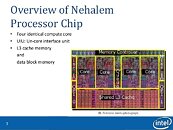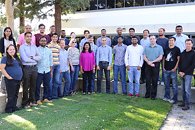AheadComputing Introduces Breakthrough CPU Architecture for General-Purpose Computing, With Jim Keller on Board
AheadComputing today announced it has secured $21.5M in seed funding to rapidly develop and commercialize its breakthrough microprocessor architecture designed to meet the new, unique computing demands across AI, cloud, and edge devices. The funding was led by Eclipse, with participation from Maverick Capital, Fundomo, EPIQ Capital Group, LLC, and legendary CPU architect and current Tenstorrent CEO Jim Keller, who developed cutting-edge semiconductors for Apple, AMD, Tesla, and Intel.
Today, general-purpose computing faces unprecedented challenges due to the rapid expansion of AI and machine learning workloads. A recent report found that 82% of organizations experienced performance issues with their AI workloads over the past year, primarily due to bandwidth shortages and data processing limitations. While specialized accelerators dominate headlines, they rely heavily on general-purpose processors for critical tasks before, after, and in-between AI operations. Existing architectures have struggled to keep pace with the demands of these emerging workloads, creating a bottleneck in compute performance that impacts industries ranging from cloud to edge computing. AheadComputing addresses this critical gap by providing innovative solutions designed to transform how general-purpose computing meets modern demands.
Today, general-purpose computing faces unprecedented challenges due to the rapid expansion of AI and machine learning workloads. A recent report found that 82% of organizations experienced performance issues with their AI workloads over the past year, primarily due to bandwidth shortages and data processing limitations. While specialized accelerators dominate headlines, they rely heavily on general-purpose processors for critical tasks before, after, and in-between AI operations. Existing architectures have struggled to keep pace with the demands of these emerging workloads, creating a bottleneck in compute performance that impacts industries ranging from cloud to edge computing. AheadComputing addresses this critical gap by providing innovative solutions designed to transform how general-purpose computing meets modern demands.
























